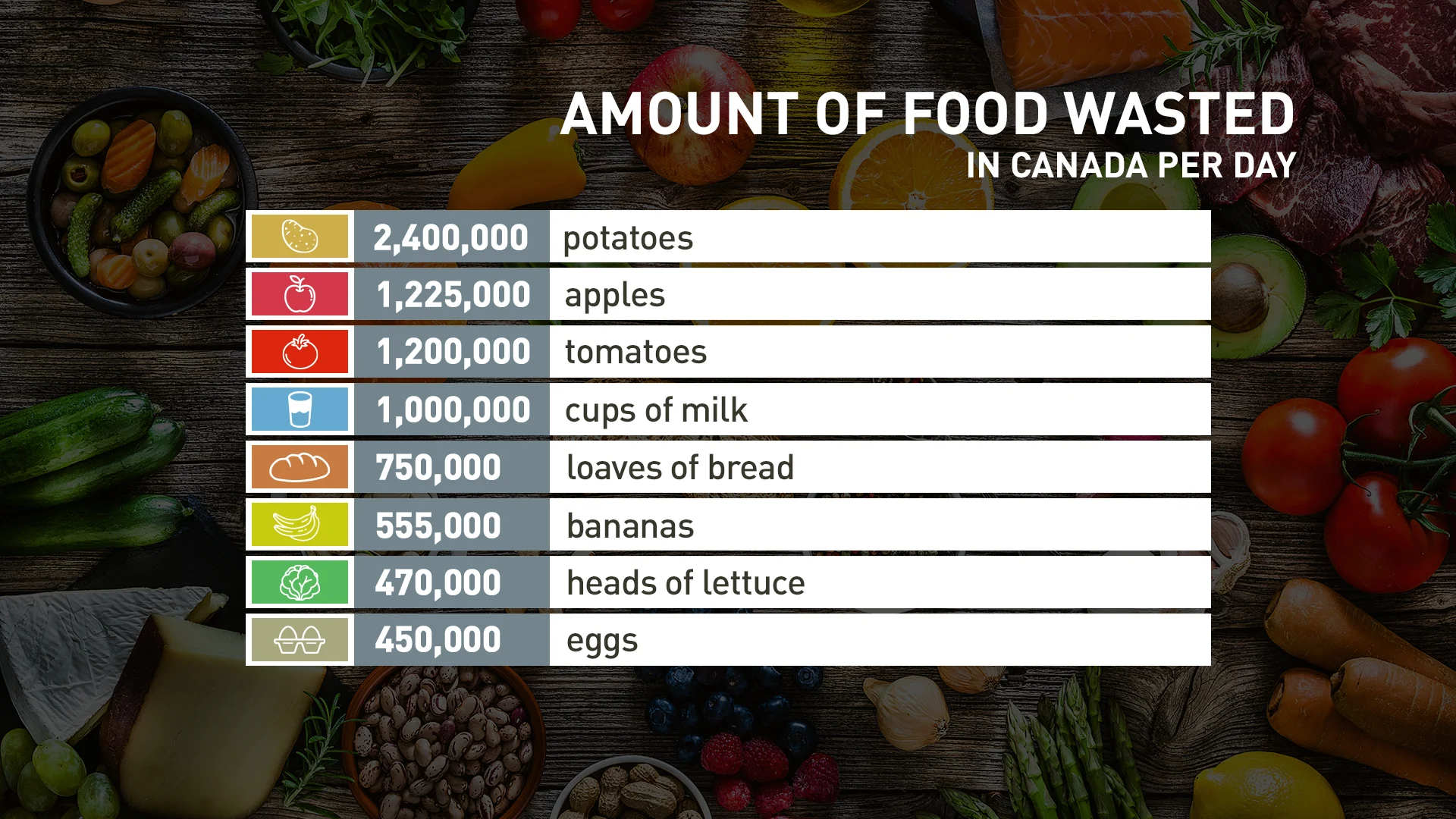
Save $1,000 annually by doing just this one thing
Inevitably, some waste is unavoidable – but there are some tips and tricks on how to prolong the shelf life of some of your favourite foods.
In Canada, we waste 2.2 million tonnes of food every year, according to the National Zero Waste Council. That costs the average household more than $1,100 per year, and for Canadians as whole, more than $17 billion.
Not only does all that waste have an impact on our wallets, but also on the planet. When we waste food, we also waste the resources that were used to grow, produce, and distribute that food to consumers.
Getting food from the farm to table has a significant carbon footprint. In fact, Canada’s 2.2 million tonnes of annual waste is equivalent to 9.8 million tonnes of CO2 and 2.1 million cars on the road. And even worse, 63% of the food wasted annually could actually have been eaten
All types of foods are wasted in Canada, but most prominent are fruits and vegetables. Each year, 30% of Canada’s vegetables are wasted, with fruit coming in at half of that, at 15%.

The National Zero Waste Food Council recommends these preservation tips and tricks:
Plan ahead: You are less likely to waste food if you only buy what you need. It is a good idea to create a grocery list and meal plan before you go to the store.
Make sure you store food properly: You can give your food a few extra days of freshness by just making sure you store it correctly. If you look at the top three most wasted food items, a big issue is not putting it away properly. Potatoes should be stored in a cooler, dark place, like a pantry, apples need to be stored in the low humidity drawer of the fridge, and lastly, tomatoes should be stored on a counter at room temperature with the stem up, because putting them on their side can cause bruising.
Do a thorough scan: Even if your apple has a bruise or your potato has a bump, it doesn’t mean it is time to throw it away. There are lots of creative recipes that you can come up with that uses every bit of the food. Also freezing and leftovers is always a good idea.
For some creative leftover recipes, check out the Love Food Hate Waste Canada website.
It is also important to note that if you notice mould or that your food is smelling a bit off, it might be beyond saving and time to throw it into the compost.
Please watch the video above to find out more on Canada’s food waste and how to better store your food...and build up your savings account!
--
Thumbnail image courtesy: Pixabay/Mohamed Hassan

